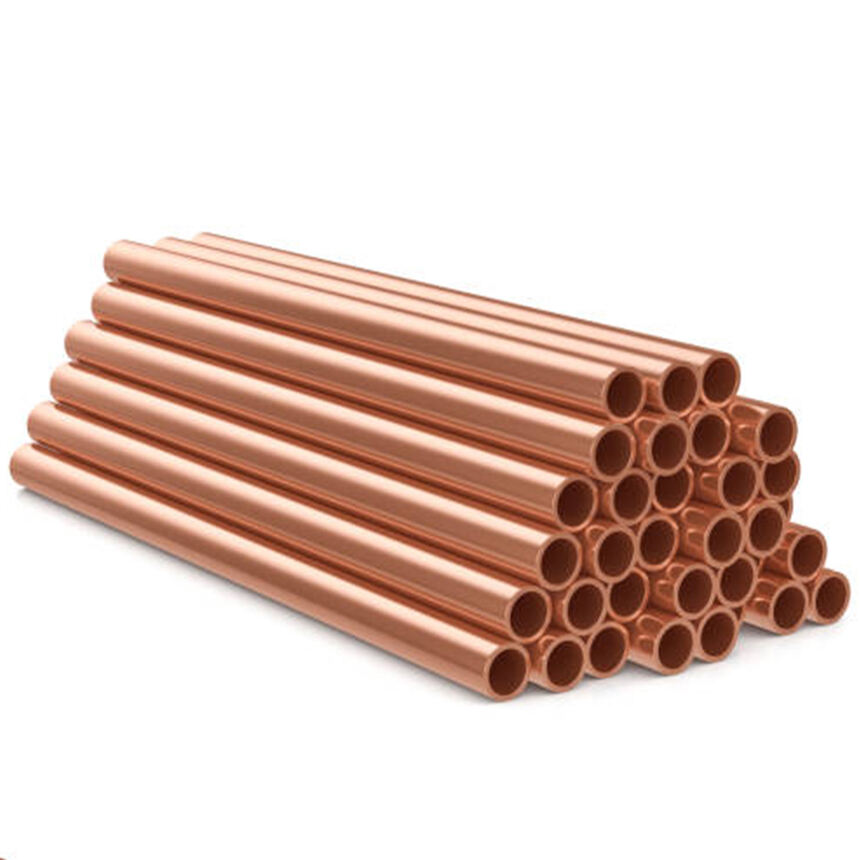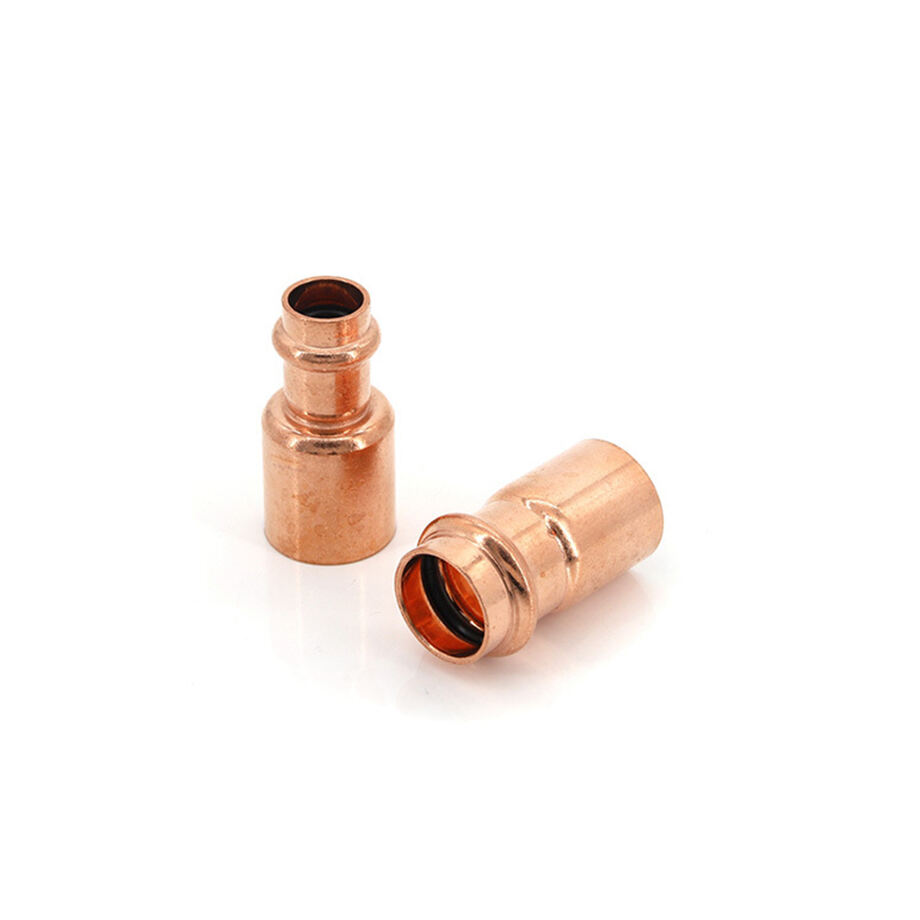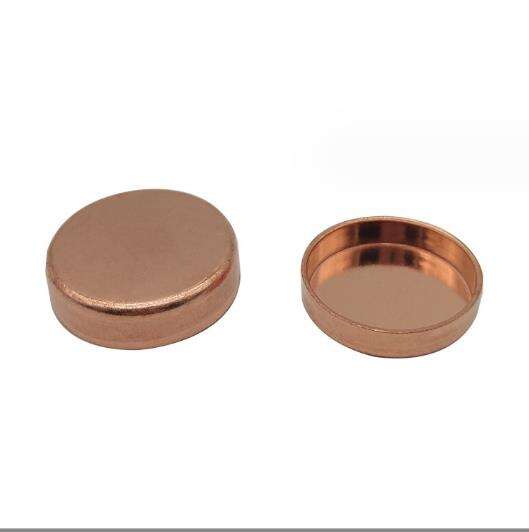Understanding Copper Pipe Pressure Reducers
Definition and Core Function in Flow Regulation
Copper pipe pressure reducers are essential components in modern plumbing systems. Their primary function is to manage the water flow and pressure, ensuring it is within safe and efficient levels. These devices work by reducing the incoming high pressure to a desired, more manageable outlet pressure, thus safeguarding the plumbing infrastructure. Flow regulation is crucial because it not only promotes efficient water usage but also results in cost savings and prolongs the lifespan of the plumbing system. In essence, properly regulated pressure can prevent unnecessary stress on pipes and fixtures, leading to reduced maintenance costs and enhanced system durability.
Role in Maintaining Optimal Pressure Control
Maintaining optimal pressure in plumbing systems is vital to avoiding potential damages to pipes and fixtures. Plumbing professionals emphasize that fluctuating pressure can lead to leaks and bursts, causing extensive damage and expensive repairs. Studies indicate that proper pressure control can significantly extend the lifespan of plumbing components. This control ensures that plumbing infrastructure is not overloaded, reducing the risk of system failures and costly downtime. For instance, consistent water pressure reduces wear and tear on appliances, making them last longer and function more efficiently, which is especially important in both residential and commercial settings.
Types of Pressure Reducers for Copper Piping Systems
Several types of pressure reducers are available for copper piping systems, each designed for specific applications. The most common are direct-acting and pilot-operated pressure reducers. Direct-acting types are suitable for smaller systems due to their straightforward mechanism, while pilot-operated variants are preferred for larger, more complex systems because of their higher precision and capacity to handle fluctuating pressures. When selecting a pressure reducer, it is essential to consider the system's specific needs, including water flow requirements and pressure ranges. Additionally, adherence to industry standards, such as those from organizations like the British Standards Institution (BSI), ensures the correct application and performance in both residential and commercial plumbing installations.
Installation Guidelines for Effective Pressure Management
Pre-Installation: Sizing and Material Compatibility
Properly sizing a pressure reducer is crucial for the effective management of fluid dynamics in piping systems. This involves selecting a size based on the flow requirements and the pipe diameter to ensure that the device can handle expected volumes without restricting flow or causing structural stress. Additionally, material compatibility is paramount to prevent corrosion and maintain long-term functionality, particularly in copper piping systems; using non-compatible materials can lead to premature failure. To determine the optimal specifications for pressure reducers, resources such as the British Standards Institution guidelines can provide a thorough understanding of necessary parameters.
Step-by-Step Installation Process
Installing a copper pipe pressure reducer involves a systematic process that even DIY enthusiasts can follow with the right guidance. Begin by collecting necessary tools, including a pipe cutter, wrench, and sealant. Follow these steps to ensure a proper installation:
- Shut Off Water Supply: Begin by shutting off the main water supply to prevent leakage.
- Drain the System: Open taps to drain any remaining water in the pipes.
- Measure and Cut Pipe: Measure the pipe where the reducer will be installed and cut the section out using a pipe cutter.
- Fit the Pressure Reducer: Attach the reducer, ensuring it aligns with the water flow direction as indicated on the device.
- Tighten Connections: Use a wrench to securely tighten the reducer to the existing pipes, applying sealant to ensure no leaks.
- Check for Leaks: Slowly turn on the water supply and check for any leaks around the reducer.
Safety is paramount, so be sure to wear protective gloves and goggles during the installation process.
Avoiding Common Errors in Valve Placement
Incorrect valve placement in plumbing systems can lead to serious inefficiencies or even failures. One common error is positioning the valve in a location where it cannot be easily accessed for maintenance or adjustments. For optimal effectiveness, it is advisable to place regulators in areas that can accommodate the need for future service without requiring extensive system dismantling. Experts recommend referencing case studies that demonstrate the repercussions of poor valve placement—such as increased maintenance costs or system downtime—to understand the importance of strategic location choice. By learning from these scenarios, both residential and commercial plumbing systems can benefit from enhanced durability and performance.
Maintenance Strategies for Long-Term Performance
Routine Inspection and Leak Detection
Routine inspections are vital in maintaining the integrity of copper piping systems and preventing costly water damage. By regularly checking your plumbing system, you can identify leaks early, preventing small drips from escalating into significant issues. For effective leak detection, employ methods such as pressure testing and visual inspections, coupled with appropriate tools designed specifically for copper piping systems. According to industry statistics, regular maintenance can extend the lifespan of plumbing systems by up to 30%. This prolongs functionality and ensures a more reliable water supply line.
Calibration for Consistent Flow Regulation
To maintain a stable water pressure within your plumbing system, periodic calibration of the pressure reducer is necessary. This process not only ensures consistent water flow but also protects the plumbing infrastructure from potential damage due to fluctuating pressures. Calibration should be conducted at least once a year, following best practices such as using a calibrated pressure gauge and adjusting the regulator's screw as needed. Industry experts emphasize that regular calibration not only preserves the system’s efficiency but also enhances its overall durability.
Signs Your Pressure Reducer Needs Replacement
Recognizing when a pressure reducer reaches the end of its lifespan is crucial to safeguarding your plumbing system. Indicators that it may require replacement include fluctuating water pressure, visible leaks, and unusual noises, such as water hammering. It is crucial to replace the pressure reducer promptly to prevent adverse effects on water efficiency and possible damage to connected appliances. Case reports indicate that delays in replacing a faulty reducer can result in increased repair costs and water wastage, highlighting the importance of timely action.
Advantages of Copper in Pressure Reduction Systems
Corrosion Resistance and Durability Benefits
Copper's natural corrosion resistance sets it apart from other materials commonly used in pressure reducers, such as steel and plastic. This resistance to corrosion is crucial as it significantly extends the longevity and reliability of the system. For instance, copper piping systems can last over 50 years, while alternatives like galvanized steel begin to fail in approximately 20 years due to rust. This longevity not only reduces replacement costs but also minimizes disruption caused by repairs. Data from industry studies highlight that copper's durability leads to fewer maintenance challenges, which is a significant factor in its preference for sustained performance in plumbing systems.
Thermal Conductivity for Temperature Stability
Copper's superior thermal conductivity is another vital advantage, ensuring stable water temperatures in plumbing systems. This feature is essential in applications where precise thermal management is critical, such as in hospitals or laboratories. The ability of copper to conduct heat efficiently allows for quicker temperature adjustments, reducing energy costs and improving system performance. Industry experts emphasize that maintaining temperature stability is crucial for system efficiency and longevity, making copper an ideal choice for pressure reduction systems. This capability also minimizes fluctuations that can stress the system, contributing to less frequent maintenance needs and less wear over time.
Cost Efficiency Over Alternative Materials
Analyzing the cost-efficiency of copper reveals that, despite the higher upfront costs, copper proves economically advantageous in pressure reduction systems over the long term. When compared to materials like plastic or PVC, copper's installation and maintenance costs are lower over its lifespan due to fewer repairs and replacements. For example, though plastic is initially cheaper, it often requires more frequent maintenance and has a shorter lifespan. Economic analyses support the affordability of copper, demonstrating that its durability and efficiency lead to reduced lifetime costs. These benefits make copper a sound investment, providing cost savings through its extended lifespan and reduced failure rates.





